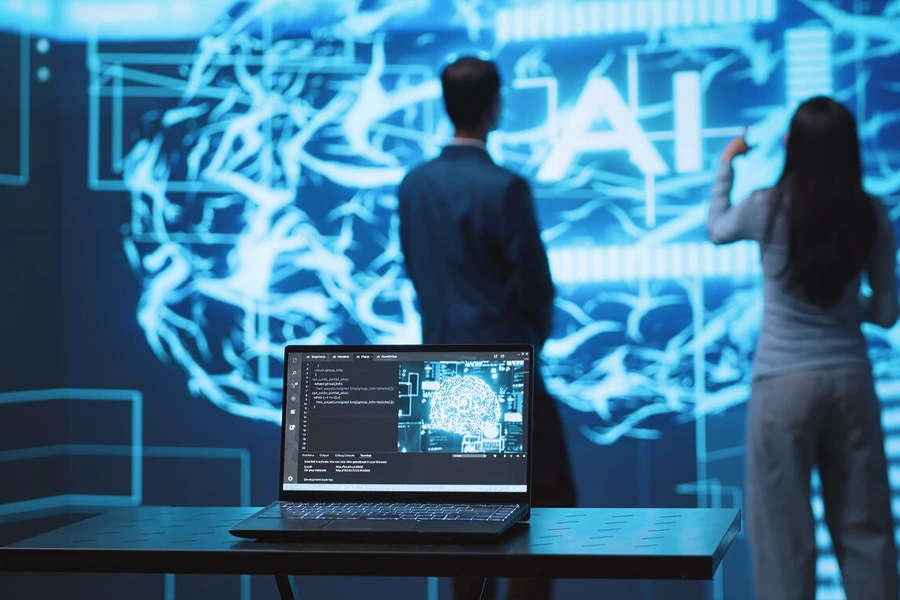Introduction
The tracking of assets is evolving by leaps and bounds, and with the integration of artificial intelligence (AI), companies are on the verge of a true revolution in the management of its assets and logistics. In this post, we'll explore how AI can improve tracking systems for assets, its benefits for the companies and the innovations we will see in the near future.
1. What is the Tracking of Assets with AI?
Artificial intelligence is taking a leading role in the transformation of the tracking of assets. Traditionally, the tracking of assets consisted of the monitoring of physical objects (vehicles, containers, equipment) using GPS, RFID, or other technologies to know your location in real-time. With the introduction of AI, this process has evolved into a much more sophisticated and predictive.
Now, the platforms of asset tracking can not only show you where the property is located, but also to predict problems, optimize routes, analyze usage patterns, and to alert automatically on anomalous situations. This not only improves the efficiency of the supply chain, but also reduces operating costs.
2. Key benefits of the Tracking Smart for Companies

Operational Efficiency Improved
The tracking systems, intelligent driven by AI can process large volumes of data and automatically optimize the routes logistics. This reduces lead times and minimizes interruptions, helping companies to operate more efficiently.
Reduction of Costs
To predict problems before they occur and to optimize the use of resources, companies can avoid costly delays and the wrong use of their assets. The automation of the data analysis also reduces the need for staff that is dedicated to the constant monitoring.
Better Decision Making
The AI can identify patterns that humans can't detect, offering concrete suggestions on the allocation of resources, the inventory planning and demand prediction. This enables businesses to make more informed decisions and strategic.
3. Use cases: How AI Can Optimize the Supply Chain
Optimization of Delivery Routes
With intelligent algorithms, the AI can analyze variables such as traffic, the weather, the density of vehicles and other factors in real-time, optimizing delivery routes at the time. This allows you to reduce the transportation time, fuel costs and carbon emissions.
Prediction of Failures in Assets
One of the great advances in the tracking of assets with AI is the ability to predict when it is likely that an equipment failure. Through the analysis of historical data, the AI can detect patterns of use anomalous and suggest preventive maintenance before a major problem occurs.
Control and Monitoring of Critical Inventory
For sectors such as the pharmaceutical logistics or food, the AI can constantly monitor the environmental conditions, such as temperature and humidity. In case of detecting variations outside the permitted range, the system can take automatic measurements to avoid damage to the product, thus ensuring the quality and safety.
4. The Impact of the Tracking Smartphone in the Security and Compliance
Greater Security of Assets
The tracking of assets with AI can identify suspicious behavior and alert the business in real-time, enabling immediate intervention. For example, if an asset has deviated from its programmed route or handled in an irregular manner, the system can generate an automatic alert, which helps to prevent theft or loss.
Regulatory Compliance
In industries highly regulated, such as the food or pharmaceutical industries, it is crucial to keep detailed records of how they are managed assets. AI can help companies to ensure regulatory compliance to constantly monitor assets and to automatically register the data needed for audits.
5. Challenges and Future Solutions: What are you Waiting for?
Although the integration of AI in the tracking of assets brings great benefits, it also presents challenges, including the need to manage large volumes of data and to ensure the security of the information. However, the companies are working on advanced solutions such as:
Blockchain for Data Security
The combination of AI and blockchain can provide an additional layer of security to the tracking of assets. This will allow the data to be completely auditable and safe, mitigating the risk of manipulation or unauthorized access.
Machine Learning for Continuous Improvement
The machine learning (machine learning) will allow tracking systems for assets to become even more intelligent with time. The more data processed, the better your predictions and suggestions, which will facilitate the continuous improvement of the logistics operations.
Conclusion
The future of asset tracking is marked by the power of artificial intelligence. As technology continues to advance, companies can see how their operations become more efficient, safe and cost-effective. To adapt to these new tools will not only ensure a competitive advantage, but also allow organisations to be at the forefront of the asset management and logistics.

